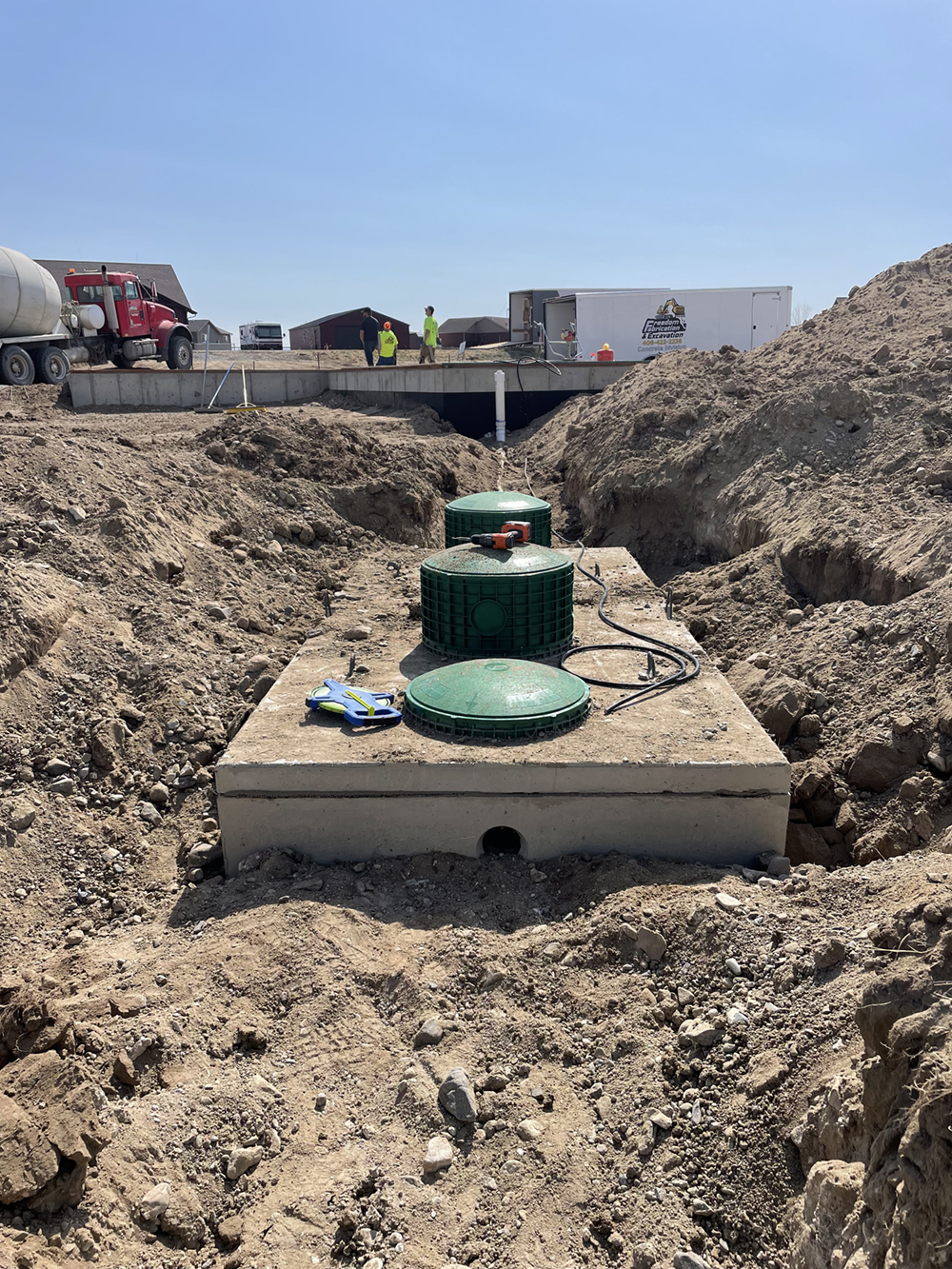Septic Systems
Please call our main office at (406) 422-2236 to schedule a walk-through and a free estimate.
No matter if it is your home or your business, it is vital that you have a septic system that is reliable and won’t cause issues harsh Montana winters.
The installation of a septic system can be a complex process that requires careful planning and execution.
Here are the general steps involved in installing a septic system:
1. Obtain permits and perform soil tests: Before installing a septic system, you will need to obtain any necessary permits from your local government and perform soil tests to determine the soil’s ability to absorb wastewater.
2. Excavate the site: Once you have obtained the necessary permits and completed soil tests, you will need to excavate the site where the septic system will be installed. This will involve removing any trees, rocks, or other obstacles from the area.
3. Install the tank: The first step in installing a septic system is to install the tank. This will involve digging a hole for the tank and placing it in the hole. Make sure the tank is level and secure before proceeding.
4. Install the drain field: Once the tank is in place, you will need to install the drain field. This will involve laying perforated pipes in a bed of gravel or installing drain field chambers. The pipes or chambers should be positioned so that they allow wastewater to drain into the soil.
5. Connect the pipes: Once the drain field is installed, you will need to connect the pipes from the house to the septic tank and from the septic tank to the drain field. Make sure the pipes are properly secured and sealed to prevent leaks.
6. Backfill the site: Once all of the components of the septic system are installed, you will need to backfill the site. This will involve filling in the area around the tank and drain field with soil.
7. Test the system: Once the septic system is installed, it’s important to test it to make sure it’s working properly. This will involve filling the tank with water and monitoring the drain field to make sure wastewater is being absorbed properly, or for a pressure dosed system, a squirt test may be required.
Installing a septic system can be a complex process that requires a significant amount of knowledge and skill. It’s important to work with a professional installer who has experience in septic system installation to ensure the job is done properly and safely.



